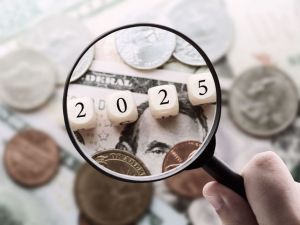In this piece, our special contributor David Stevenson cuts through the noise around ESG investing – a field that’s become unnecessarily complicated and controversial – to bring some much-needed clarity to what really matters.
A few years ago, every fund manager on the planet seemed to be launching a new ESG (Environmental, Social, and Governance) fund of some sort, while boards worldwide were setting up ESG subcommittees. Climate emergency, equality and diversity and impact were the trigger words for a great corporate “awokening” (a term used by critics). A few years later, the inevitable backlash is rolling over the whole world of finance, with much of the most heated criticism coming from the US, where DEI (Diversity, Equity, and Inclusion) and ESG have increasingly become terms of abuse for some on the political right.
For many observers, all this was avoidable, not least because too much jargon was being used. Too many noble ideals were all being thrown into one box, marked “ESG”, without due care and attention. To be clear, much of what constitutes ESG makes absolute sense, and frankly, any sensible long-term investor should care about long-term sustainability or proper corporate governance (the G in ESG).
If you own buildings, for instance, as a landlord via real estate investment trust or REIT, cutting your energy bill and minimising your environmental impact (the E in ESG) makes absolute sense – you don’t really need an ESG mandate to recognise good old-fashioned common sense. And ensuring you have a happy, stable workforce that includes all talents and backgrounds, some of whom are from your local community, also makes business sense (the S in ESG). The challenge with ESG investing is the language and terminology used.
In no order of importance, you’ll probably encounter some or all of the following.
- ESG refers to environmental, social and governance factors that allow an investor running a fund to screen through companies (stocks) for their corporate policies. This is often a negative process, as in firms frequently fail the various screens and are excluded from the list of eligible stocks to include in a fund or portfolio. In recent years, the E bit of the acronym, environmental, and specifically climate change-related policies, have come to the fore.
- Impact investing. This is the positive to ESG’s negative! Whereas most ESG investors start with the full list of companies and then screen out lots of stocks, an impact investor might start with the stocks that will proactively make a difference and have an impact. These impacts are quantifiable and measurable i.e they might drastically cut carbon emissions or provide an immediate social impact
- Sustainable investing. This is a broader term that involves more philosophical ideas centred around the way a business interacts with its environment (and to a lesser degree, wider society and stakeholders) over the long term. Embedded in this concept is the idea of a circular economy, which involves reducing emissions and waste, and increasing resource efficiency. The corporates themselves frequently lead this effort, aiming to make their businesses more robust in the face of climate change, for instance, and to strengthen their supply chains.
- SRi investing or socially responsible investing. This is a much older term that emerged from the ethical investing movement, which in turn was frequently inspired by religiously oriented investors who didn’t want to invest in businesses related to sin, for instance. Alternatively, Sharia investing, conducted by Islamic investors, can be viewed as a form of ethical and socially responsible investing. Defence companies or even banks (which charge interest) can be a problem for many SRi investors as will gambling, tobacco and drinks businesses.
Cue the regulators
If all these acronyms and terms weren’t confusing enough, regulators have also intervened – especially in Europe – and introduced new reporting requirements that aim to formalise some of the ideas and strategies outlined above.
The primary focus has been on funds that market themselves as ESG, green, or sustainable. Arguably, the regulators were somewhat late to the game of what was called greenwashing, i.e., businesses and fund managers marketing ESG funds that are anything but.
There’s now a relatively straightforward taxonomy of terms circulated, which you should keep an eye on. The key distinction is between Article 8 and Article 9 funds, with the primary difference relating to their sustainable investing ambitions as outlined in the EU Sustainable Finance Disclosure Regulation (SFDR).
Article 8 funds are classified as those that promote environmental or social characteristics, while Article 9 funds have sustainable investment as their explicit objective. So, an Article 8 fund might promote environmental or social characteristics but does not necessarily make sustainability its core aim. By contrast, Article 9 funds or deep green funds, as they are called, have an explicit sustainable investment objective – meaning the primary reason for the fund’s existence is to deliver a positive environmental or social impact. All investments must meet strict criteria to be defined as “sustainable investments” under SFDR, and fund managers must provide more detailed disclosures about how sustainability objectives are achieved and their real-world, measurable impact.
As regulators have become increasingly involved, there is also a need for broader, market wide benchmarks to measure your company or fund against. Some of these benchmarks are indices run by private index companies, including the Dow Jones Sustainability Index (DJSI), MSCI ESG Ratings and Indices, FTSE4Good Index Series, and Sustainalytics ESG Risk Ratings. Regulators also consider quasi-governmental benchmarks, such as the UN’s Sustainable Development Goals (SDGs), which consist of 17 global goals with 169 associated targets designed to address urgent global challenges by 2030. Each goal includes several specific, measurable targets that focus on issues like poverty, hunger, health, education, gender equality, water, energy, economic growth, social inclusion, and environmental protection.
You might also see references to Paris-aligned funds: these aim to meet the requirements of the Paris Agreement, specifically seeking to keep the global temperature rise well below 2°C and preferably to 1.5°C above pre-industrial levels through emission reductions. This means the fund’s holdings, index, or investment strategy follow strict decarbonisation pathways and exclude high-emitting fossil fuel activities, ensuring they contribute to the transition to a low-carbon economy.
What makes it even worse from a jargon perspective is that we’ve seen an explosion of funds that invest broadly in ESG and the Green sector, with exchange-traded funds (ETFs) very much in the vanguard. As of today, looking just at London-listed ETFs, there are over 708 “sustainable” ETFs according to JustETF’s fund screener. As we look down the list of the biggest of these funds – many with billions of pounds in assets under management – you’ll see a dizzying array of terms, including screened ETFs (negative screening to exclude certain types of companies). ESG enhanced, World SRI funds, bond ESG funds, and socially responsible funds. Using these ETF screens, you’ll also see automation, robotics, and AI ETFs appear on the list, flagging one critical issue to consider: not all ESG funds are created equally.
ESG means lots of different things to lots of different investors
That last point about tech stocks and ESG highlights an important consideration. Generally, if you use a screen that mainly focuses on environmental factors – as most ESG screens do – you’ll likely quickly exclude dirty, emissions-heavy industries. Chemicals, energy companies, and industrial firms – they may all end up with poor scores. However, these firms also tend to be very capital-intensive and employ many skilled manual workers. They might also have unionised workforces, which can be a positive for some social screens.
By contrast, many firms that score highly on an ESG screen are capital-light, utilise technology more intensively, likely have highly paid but smaller – non-unionised – workforces, and produce significantly fewer emissions.
Alternatively, you might also find your stock selection focused on more impactful outcomes, with an emphasis on clean energy companies or those actively involved in the electrification of once carbon-intensive products, such as electric cars and Tesla. This can have unintended sectoral biases.
You might, for instance, within this impact “envelope” rule out traditional utility firms – too many gas power stations – and focus instead on wind or solar businesses, sectors that the Trump administration has hit while also, in some cases, currently suffering from dramatic Chinese price competition.
Already, I hope you can see that a perfectly reasonable ESG focus can end up with some significant sector biases, i.e towards tech firms or clean energy firms and away from traditional heavy industry. That’s been good news for share and fund price performance in recent years, but arguably less beneficial for the planet. Why? Because if we are to make a difference to carbon emissions, for instance, we really need to incentivise, say, poorly scoring chemical or concrete companies to cut their emissions. Should we exclude all these companies (the dominant ESG strategy) or focus on investing in those more sustainable concrete and chemical companies, for instance, that are trying to make a difference? In this example, an impact fund might invest in stocks of a company, such as an oil company drastically reducing methane emissions, that fails an ESG screen.
All of which leads me to another classification issue: the benchmarks used. I mentioned the various private benchmarks run by major stock market index companies such as MSCI and S&P Dow Jones. While each has its merits, they are all individual and idiosyncratic. Some include certain types of stocks, others omit them.
Let me give a specific, concrete – pardon the pun – example or two: nuclear energy and defence companies. Some researchers focused on sustainability have a strict rule to exclude both nuclear and defence stocks, because nuclear is deemed unsafe, while killing people and blowing up towns is seen as the opposite of sustainability. However, other researchers argue that nuclear energy is fairly net-zero positive, while defending democracy forms the very foundation stone of what makes a society fair and sustainable.
Every reader of this article and every investor will have their own take on these exclusions. They’ll also have their view on another quandary: should you exclude all hydrocarbon energy firms (oil and gas companies)? Most ESG funds do, but some will include those energy firms that go out of their way to focus on firms that, for instance, have drastically lowered methane emissions, a big challenge and a vast potential low-hanging fruit objective in terms of getting to net zero.
And if all this wasn’t bad enough, there’s another wrinkle. I would guess that for many investors, they don’t want to exclude stocks; instead, they want to positively embrace businesses that are having an immediate impact – that’s certainly the case for many SRi and Impact investors. They want positive change, quickly. But many of the most interesting impact firms that could be included in an Article 9 impact investing fund are privately owned i.e not listed on a stock market, and that involves a private equity-style approach, which may be difficult to package in an ETF.
My checklist for sustainable investing
How should ethically and socially minded investors approach the complex web of jargon and effectively implement an investment strategy? I have several suggestions.
First, work out if you are an impact type or an exclusion investor type. By this I mean: do you want to access a wide diversified pool of stocks but just exclude the sectors you feel are a bit questionable? If that is the case, a standard ESG fund, also known as an Article 8 fund, will likely suffice. If, by contrast, you want to have a positive, proactive impact, focus more on direct impact funds, which will be Article 9 funds, and look for strategies that may target Paris-aligned benchmarks or Net Zero strategies. You might also consider the handful of actively managed impact funds available, or perhaps even think about investing in single stocks where the business is creating a real impact you can visibly measure and understand such as clean energy businesses in the wind or solar power space.
That brings me to the issue of active versus passive funds. Funds provide you with more diversification, as opposed to buying a single stock. Most ESG funds are index trackers built around a benchmark, though there are more than a few actively managed funds which take ESG and sustainability seriously. ETFs are cheaper – mostly – but they rely on their stock selection criteria through using an index benchmark. These benchmarks come from the companies I mentioned. That means that you really need to review the index to understand precisely what it includes and what it excludes. Go online, find the index web page, and look at the methodology document.
In my view, not all ESG indices are created equally – the more specialised index firms take great care in understanding the underlying businesses and conduct thorough research. Actively managed funds overcome some of these “benchmark reliability” issues as the manager does all the due diligence, but you’ll probably pay extra for that service.
Crucial to understanding the methodology of a fund is how the benchmark designers built their index, or the concepts and ideals that the active manager chooses to prioritise. Some focus much more on the S in ESG, the social impact. Others are more environmentally focused, particularly in terms of reducing carbon emissions. Understand what your priority is: save the planet or another objective. Avoid investing in sectors you dislike, such as tobacco, via an SRi strategy.
That also forces you to confront the next item on my checklist: nuclear power and investing in defence. I passionately believe that both deserve a place in an ESG-focused strategy, but I realise many will strongly disagree with me. That nuclear and defence decision also highlights a broader issue: forget the ESG principles for a moment – what kind of stocks do you actually end up investing in if you use a diversified fund? Review the fund’s top holdings to see which types of businesses and sectors dominate the list. Don’t stop there: explore further and examine the other stocks listed. Several ESG funds, for instance, include oil and gas companies, which might in turn horrify you. But, as I said, perhaps the ESG screening process is prioritising those energy companies that are making efforts to reduce their carbon emissions.
And last but by no means least, don’t overpay for all this stock screening and picking expertise. There’s no guarantee in investing except one – excessive fees can destroy your long-term returns over time. With ESG, as with all forms of investing, keep costs low, diversify sensibly, and understand precisely what you want from your investment strategy.
Please remember that when investing, your capital is at risk. The value of your portfolio with Moneyfarm can go down as well as up and you may get back less than you invest. Past performance is not a reliable indicator of future performance. The views expressed here should not be taken as a recommendation, advice or forecast. If you are unsure investing is the right choice for you, please seek financial advice.
*As with all investing, financial instruments involve inherent risks, including loss of capital, market fluctuations and liquidity risk. Past performance is no guarantee of future results. It is important to consider your risk tolerance and investment objectives before proceeding.





